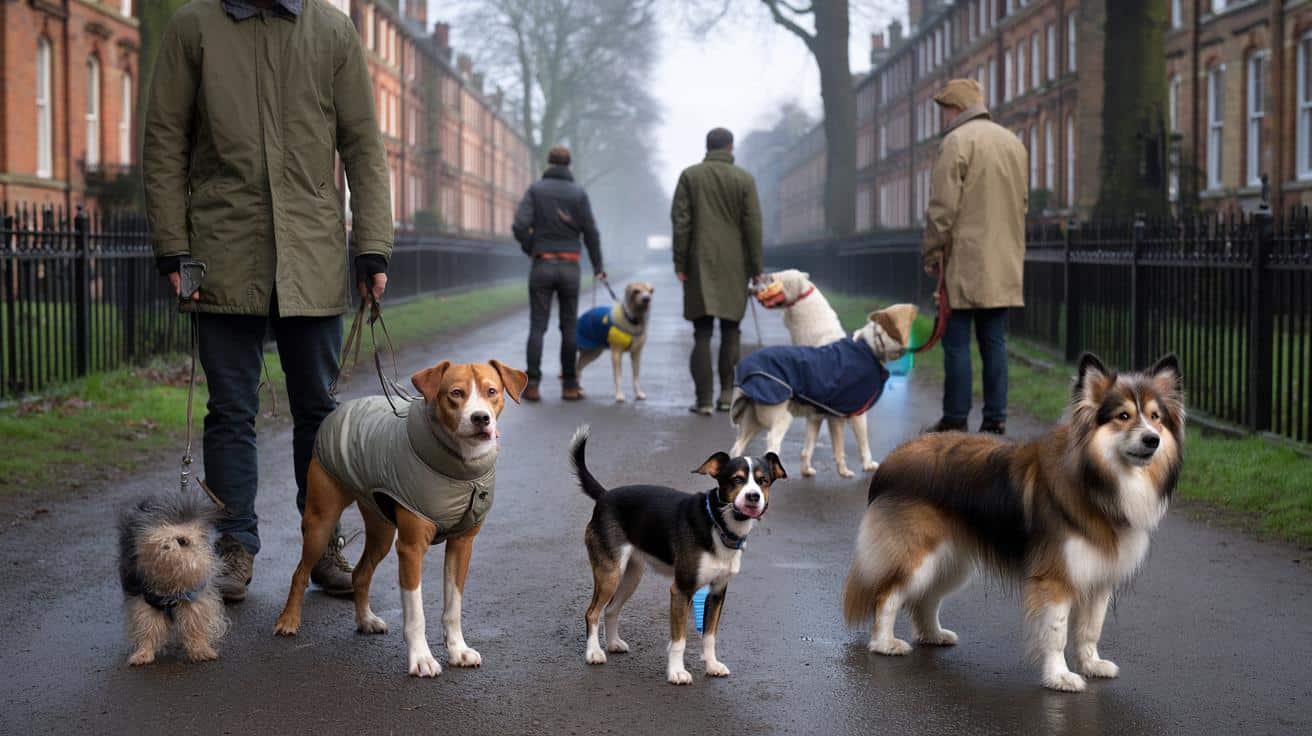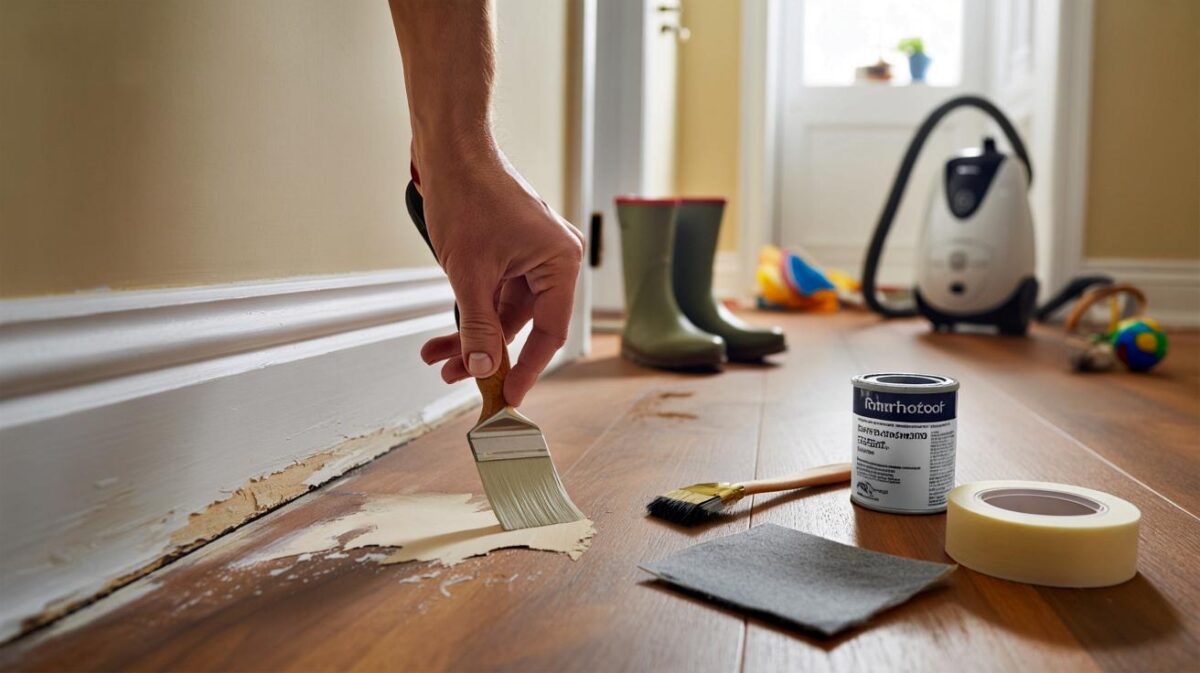Your dog still wants walkies, but your choices now carry weight.
Misty mornings and chill drizzle return across the country, and with them the annual dilemma: when does a coat move from cute to crucial? Here is clear, practical guidance that blends temperature triggers, behaviour clues and breed-by-breed realities, so you can step out confident your companion stays warm and well.
Reading the first shivers
Dogs broadcast cold stress long before they give up on a walk. Watch for shivering, a tucked tail, raised hackles, paw-lifting, slowing down, or a beeline back to the door. A reluctant start, or a sudden refusal to sit on frosty ground, tells you the conditions bite.
Seven red flags on a cold walk
- Shivers that persist beyond the first minute outdoors
- Reluctance to leave the doorway or repeated stops
- Paw-lifting, “tiptoeing” or licking cold, salted pads
- Hunched posture and a tucked tail against the belly
- Apathy mid-walk, lagging behind or refusal to fetch
- Seeking your legs or trying to turn for home
- Wet coat plus wind, leading to rapid heat loss
Short-haired, elderly or unwell dogs often need a coat once the thermometer dips to 5°c, especially when wet or windy.
Temperature triggers and risk multipliers
Air temperature tells only part of the story. Wind strips warmth. Rain soaks the coat and speeds heat loss. Standing still chills faster than trotting. Body size and coat type change everything.
- Dry, still 7–10°c: many dogs cope; small or fine-coated breeds may need a light layer.
- 0–5°c with wind: coat up for most short-haired and senior dogs; limit standing still.
- Below 0°c: protect almost all except robust double-coated breeds during brief, active sessions only.
- After baths, swims or heavy rain: treat as two steps colder until fully dry.
Wet plus wind can turn a “feels fine” forecast into a risky outing within minutes.
Breed and age: who needs what, and when
Coat density, body mass and health status drive decisions. A tiny Italian Greyhound chills faster than a Labrador. A veteran Collie with stiff hips suffers on frosty pavements without warmth around the back and loin.
| type | typical trigger | coat suggestion | notes |
|---|---|---|---|
| Sighthounds, boxers, bulldogs, short-haired terriers | ≤ 7–5°c, sooner if windy or wet | Insulated, windproof, belly coverage | Little body fat; thin skin; benefit from quick-dry lining |
| Toy breeds (Yorkie, Chihuahua, Pomeranian) | ≤ 10–7°c | Light insulated coat or fleece under a shell | Close to ground; heat loss through belly and paws |
| Puppies under 12 months | ≤ 10–7°c | Soft, flexible layer; avoid heavy bulk | Still learning to regulate temperature; keep outings short |
| Seniors or dogs with arthritis/heart/endocrine disease | ≤ 10–7°c, indoors draughts included | Warm, easy-on coat, back and loin coverage | Stiff joints ease with consistent warmth |
| Retrievers, spaniels, collies (moderate coat) | ≤ 5–2°c; rain or long waits at any temp | Waterproof shell; insulated if inactive | Dry thoroughly after swims; avoid long stands |
| Nordic double-coats (Husky, Malamute, Newfie) | Below 0°c only, and mainly when wet or still | Usually none; use shell in sleet or strong wind | Monitor for overheating during runs |
Choosing a coat that actually helps
Fit and coverage
- Measure neck, chest and back length to the base of the tail.
- Use the two-finger rule at the neck and girth for a snug, non-pinching fit.
- Prioritise belly coverage; most heat escapes there, especially in small dogs.
- Keep shoulders free so the stride stays natural.
A well-fitted coat should not twist, chafe the armpits, or ride over the tail when trotting.
Materials that matter
- Outer: windproof, waterproof fabric rated at least 5,000 mm hydrostatic head.
- Insulation: lightweight synthetic fill or fleece that dries fast.
- Lining: smooth, snag-free; avoid seams where they rub.
- Closures: wide hook-and-loop or buckles that hold under pulling.
- Care: machine-washable, quick-dry to reset for the next walk.
Safety checks
- No dangling straps or loose toggles to catch on brambles.
- Reflective trim for dark school-run hours.
- Remove indoors to prevent overheating, especially near radiators.
Training your dog to accept a coat
Pair the new coat with good things. Let your dog sniff it. Reward any calm interest. Touch the coat to the shoulders, treat, then remove. Clip it on for a few seconds, treat, and start a short game. Build to a minute, then a lap of the garden. Keep sessions upbeat and brief.
- Day 1–2: coat on for 10–30 seconds, three times, with treats.
- Day 3–4: two five-minute sessions indoors with play.
- Day 5: a short, familiar walk wearing the coat; end before your dog tires.
Never force the coat on; enthusiasm today prevents wrestling tomorrow.
Cold-weather routines that protect joints and lungs
Warm up for three minutes at a brisk walk before fetch. In biting wind, use several short outings rather than one long trudge. Dry to the skin after rain; a damp undercoat saps heat. Rinse salt and grit from paws, then pat dry between toes. Keep post-bath time indoors until fully dry.
Several short walks beat one long outing when the wind bites or sleet sets in.
For ageing dogs or canine athletes, add low-impact indoor work on bitter days: scent games, short obedience drills, or gentle mat stretches. Warmth over the back can ease morning stiffness and cut the risk of a pain flare later.
Real-world moments when a coat pays off
- Waiting at the school gate or in an unheated car before a vet slot.
- Standing at the touchline while you chat after training.
- Post-groom or bath pickups, especially with clippered coats.
- River paths with wind funnelling along the water.
- Drizzle that soaks a short-haired dog in minutes.
A quick decision tool for busy owners
- Temp under 5°c and your dog has short hair, is small, senior or on medication: coat on.
- Wet plus wind and any waiting around: coat on, keep the session short.
- Active 15-minute fetch at 3–5°c, dry and calm: many medium coats cope without, monitor for shivers.
- Below 0°c: coat on for most breeds except thick double-coats during brief, steady movement.
Extra context that helps you plan
Think in “feels-like” terms. As a rule of thumb when it’s damp and breezy, mentally subtract 2–3°c from the number on your phone. A light waterproof shell can be enough on such days for sturdy medium breeds, while a small, short-haired dog may need both insulation and a shell. Budget ranges run widely; many effective coats sit between £20 and £60, with durable waterproof shells often lasting several winters if you rinse salt and hang dry.
Check for rub points after the first few walks. If you see pink skin in the armpits or along the sternum, adjust the straps or change the cut. Add paw protection on gritted routes and trim fur between pads to reduce ice balls. If your dog coughs after cold exertion, shortens stride from stiff hips, or shows persistent shivering even with a coat, book a check-up; warmth helps, but hidden pain or illness can lurk behind the shakes.








